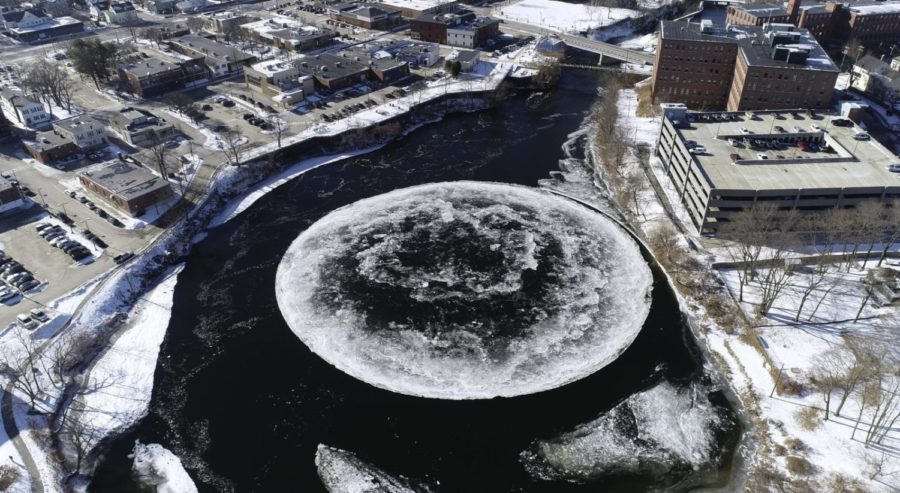The Spinning Ice Disk of Maine
February 12, 2019
On the 14th of January, the town of Westbrook, Maine, was astounded when they discovered an ice disk slowly churning in the Presumpscot River. By Thursday, it was still spinning in the same spot. It supposedly changes opacity depending on the time of day and cloud coverage. “It kind of looks like a crop circle,” a resident stated in a news piece by the Portland Press Herald.
The ice disk is estimated to be 300 feet wide. It is one of the largest ice disks in the world, but not the first. Ice disks have made appearances around the world from Russia to Washington. They occur naturally in nature, usually in a perfect circle. In a 1997 paper by the Royal Meteorological Society, the researchers theorized that the river water creates a whirlpool effect around a block of ice, then erodes it until its edges are completely round and smooth.
However, a paper published in 2016 added to the decades-old theory. Scientists of the journal, Physical Review E, came up with the theory that river currents help the disks form, but the changing temperatures keep them from spinning. Due to warm water being denser than cool water, ice melts and sinks, creating a vortex under the disk causing the rotation. The warmer the water, the faster the speed of the spinning disk.
During a broadcast on the Maine Public Radio, a physicist from the University of Southern Maine, Paul Nakroshis, was skeptical that temperature change created the Maine ice disk. The temperatures of the Presumpscot River aren’t warm enough to form a vortex under broken ice. “So most likely the cause of the rotation is just the river water going by the disk, and once it starts rotating in that direction it’s probably going to continue,” Nakroshis explained. Scientists are hoping to study the disk before its final depart.





















